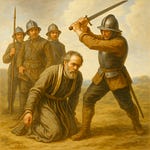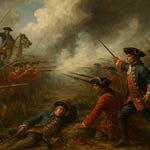For More Events on This Day in Irish History - https://thisdayirishhistory.com/april-15/
Welcome back to This Day in Irish History. I'm your host, Raymond Welsh. Before we dive into today's story, if you’d like to explore other significant events that happened on this day in Irish history, visit thisdayirishhistory.com—the link is in the episode description. Now, let’s journey back to April 15, 1912, when the RMS Titanic slipped beneath the icy waters of the North Atlantic, taking with her over 1,500 souls—and leaving an indelible mark on Ireland's history and heart.
Though the Titanic famously struck the iceberg late on the night of April 14, it wasn’t until around 2:20 a.m. on April 15 that the “unsinkable ship” met her tragic end. While the disaster is often remembered as a global catastrophe, it has deep and lasting connections to Ireland—beginning with her birthplace: Belfast.
Constructed by Harland & Wolff, the massive shipyard on Queen’s Island, the Titanic was a marvel of engineering and ambition. At the time, she was the largest and most luxurious passenger liner ever built. The project was a point of immense pride for Belfast, a city booming from its shipbuilding prowess. Thousands of workers labored for over two years to bring Titanic to life. These men, many of them from working-class Protestant and Catholic families alike, devoted their skill and sweat to a ship that would become one of the most iconic vessels in maritime history.
On April 2, 1912, Titanic departed Belfast for Southampton, marking her final journey through Irish waters. Ten days later, she would lie at the bottom of the sea.
But the connection to Ireland goes far beyond the shipyard. Titanic’s last port of call was Queenstown—now known as Cobh—in County Cork, on April 11. It was here that 123 Irish passengers boarded the ship, many of them young emigrants from Munster seeking new lives in America. Most traveled in third class, full of hope, leaving behind rural poverty for the promise of opportunity abroad. Among them were families, single men and women, and children—many with dreams as vast as the Atlantic itself.
Tragically, the steerage passengers bore the brunt of the disaster. Confusion, language barriers, locked gates, and unequal access to lifeboats meant that many of these Irish passengers never had a real chance at survival. Of the 123 who boarded at Queenstown, only 44 survived.
The aftermath of the sinking rippled through Ireland. Small towns and villages in counties Cork, Kerry, Clare, and beyond were plunged into mourning. Families waited in anguish for word that never came, and funerals were held for those whose bodies were never recovered. The scale of the loss was personal and profound—each name lost was a brother, a daughter, a neighbour, a friend.
The Titanic disaster also brought uncomfortable truths into the public eye: the rigid class structures aboard the ship, the lack of lifeboats, and the inadequate emergency planning. It prompted reforms in maritime safety, including changes to lifeboat requirements and wireless communications.
In Belfast, the pride in Titanic’s construction turned to sorrow and introspection. The shipyard workers, many of whom had once boasted of building “the greatest ship in the world,” now mourned a creation that symbolized both human ingenuity and human fallibility. For decades, Titanic was a hushed topic in Belfast, a ghostly chapter in the city's industrial legacy. Only in recent years has the city reclaimed its role in the story, culminating in the opening of the Titanic Belfast museum in 2012—a century after the disaster.
Today, the story of Titanic is part of Irish folklore as much as it is global history. From the windswept cliffs of Cobh to the docklands of Belfast, the memory of those lost lingers. The tragedy is not just about a ship—it’s about the people aboard her, the hopes they carried, and the futures that never came to pass.
Thank you for joining me on this journey through Ireland’s rich past. Please like and subscribe, and until next time, I’m Raymond Welsh—Slán go fóill.













Share this post